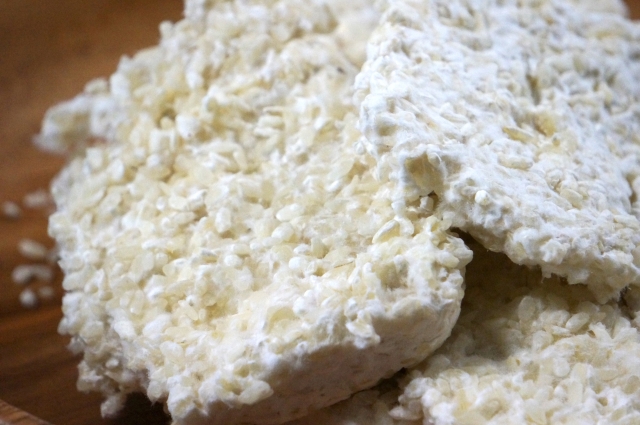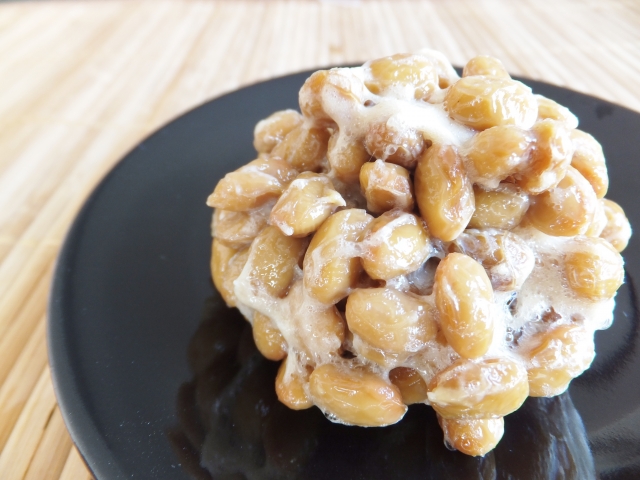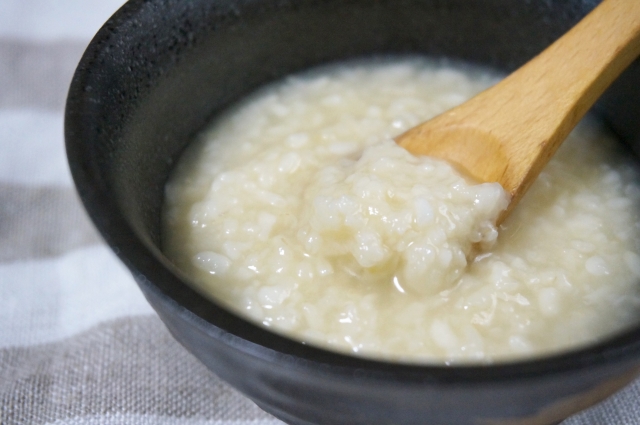Koji Who? It’s the Pride of the Nation!
No, we’re not talking of a certain Japanese male with the said name. The technical term being ‘aspergillus oryzae’, koji is a type of fungus widely used in Asian cuisines. At a glance, koji is like a white, woolly frost. When you bite into a spoonful of kome-koji (i.e. koji rice or better known as rice malt in English), it has a pleasant sweet, nutty flavor. In bygone days the Japanese character for kome-koji was elegantly depicted with the combination of two words: rice (米) and flower (花), hence ‘糀’.
Since it is used in cooking and brewing, the mold is certainly not poisonous and is safe to eat. In fact, koji is packed with full of goodness that is beneficial for health and beauty. It is commended and praised to the point that the respectful Scientific Conference of Brewing Society of Japan declared koji as the National Fungi in 2006. So how do the Japanese use it in their diet and why is it raved about so much?


Fermenting and Brewing
Ferment soybeans with koji spores and you’ll get miso paste, natto or soy sauce. Ferment barley with koji and you’ll have barley miso. Rice will ferment nicely to rice miso or amazake (sweet non-alcohol rice drink). When it comes to brewing, alcoholic liquids such as sake (rice wine), mirin (contains alcohol like sake but with higher content of sugar and used heavily for Japanese cuisine) and shochu (spirits made from rice, potatoes, barley or buck wheat) are distilled with koji. You can also pickle various vegetables by marinating with koji. From these examples alone you can see how koji plays a vital role in traditional Japanese ingredients and beverages.
In the past there were a significant number of individual specialists producing koji spores across the country. As the Japanese started to adopt more westernized eating habits in the post-war era, the significance of koji was somewhat lost and many producers ceased production. However, people have started to reacknowledge the benefits of Japanese food in recent years. With the likes of miso and soy sauce, naturally fermented products in general have started to come under the spotlight over the last decade. One of the most recent successes was ‘shio-koji’, that is, fermented salt with kome-koji, which enhances the flavor of ingredients in cooking. Moreover, marinating fish or meat with shio-koji makes the texture of these ingredients surprisingly tender, thanks to the wonderful work of enzymes. Unlike miso or soy sauce which could overpower and dominate the overall flavor of the dish, shio-koji merely gives salty flavor and can be utilized not only for Japanese but for various other cuisines. Today readymade shio-koji are found on the shelves of supermarkets everywhere, but with kome-koji also easily available in stores, you can make your own shio-koji quite easily with the salt of your choice. By adding a shop bought kome-koji to your run-off-the-mill soy sauce, which is already a product of koji itself, it transforms to a fantastic condiment with deep, rounded flavor.
Nutritional Benefits
Koji is known for containing B vitamins that are essential for metabolism. One of the enzymes is called amylase which converts starches to glucose. This is why ingredients marinated with koji become mellow in flavor. Glucose is the pivotal sugar component in human metabolism and widely used in intravenous solution. Amazake made of kome-koji (as opposed to those made of sake lees known as sake-kasu) is therefore known as ‘a drinkable IV shot’. Koji is also rich in oligosaccharides, another form of sugar widely known as beneficial for healthy gut bacteria, as well as dietary fiber, resulting in numerous benefits such as cancer prevention, weight loss, lowering of cholesterol levels, and regular bowel movements.

As carbohydrate is broken into sugar molecules, the water molecules are added into a substance. Such chemical process is brought on by protease enzyme, which helps to soften the texture of meat or fish and helping digestion when consumed.
Koji spores are said to suppress the increase of melanin, the notorious pigment responsible for blotchy skin and freckles.
These are only a few examples of health and beauty benefits koji is acclaimed with- the list can become non-exhaustive. For centuries people knew fermented foods were essential for leading a healthy lifestyle, and the advancement in today’s nutritional science has proven what had been widely believed to be true. Restaurants specializing in dishes cooked with a variety of fermented foods are becoming popular as of late. There are even television shows dedicated to introducing fermented foods and beverages. With traditional culture of Japanese cuisine acknowledged by the United Nations Educational, Scientific and Cultural Organization (UNESCO) and registered as the Intangible Cultural Heritage of Humanity, the key ingredients like miso and soy sauce are set to become popular globally. But do bear in mind that where there is popularity, there is always our humble national pride koji acting as the driving force behind the scenes.
